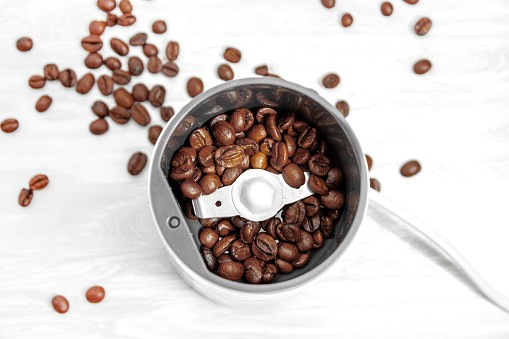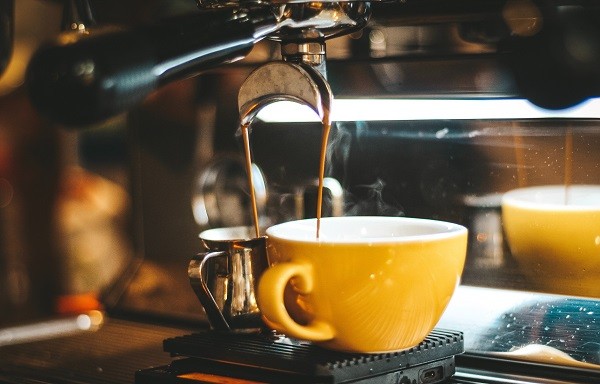The Ultimate Guide to Making Delicious Cold Brew at Home, No Machine Required
Are you tired of spending a fortune on cold brew coffee at your favorite café? Look no further! In this ultimate guide, we’ll show you how to make delicious cold brew right in the comfort of your own home, without the need for any fancy machines. Whether you’re a coffee aficionado or just someone who enjoys a refreshing and smooth cup of cold brew, this step-by-step guide has got you covered. We’ll walk you through the entire process, from selecting the right coffee beans to mastering the perfect steeping time. Plus, we’ll share some expert tips and tricks to elevate your cold brew game to the next level. Get ready to impress your friends and family with your newfound barista skills as you whip up a batch of irresistible cold brew that rivals even the most renowned coffee shops. So grab your favorite mug and let’s dive into the world of homemade cold brew coffee!
What is cold brew coffee?
Cold brew coffee is a method of brewing coffee that involves steeping coffee grounds in cold water for an extended period, typically around 12 to 24 hours. Unlike traditional hot brewing methods, cold brew extracts the flavors and caffeine from the coffee beans without the use of heat. This results in a smoother and less acidic cup of coffee, making it perfect for those who find regular hot brewed coffee too intense. Cold brew coffee is typically served over ice or mixed with milk or other flavorings to create a refreshing and flavorful beverage.
Benefits of making cold brew at home
Making cold brew at home offers several benefits. First and foremost, it’s much more cost-effective than buying it from a café every day. By making your own cold brew, you can save a significant amount of money in the long run. Additionally, making cold brew at home allows you to have complete control over the brewing process. You can customize the strength and flavor of your cold brew to suit your personal preferences. Plus, you can experiment with different coffee beans and flavorings to create unique and exciting variations. Making cold brew at home also gives you the flexibility to make larger batches and store them for later, ensuring that you always have a refreshing cup of cold brew ready to enjoy.
Cold brew vs. iced coffee: What’s the difference?
Although both cold brew and iced coffee are served cold, there are distinct differences between the two. Iced coffee is made by brewing hot coffee and then chilling it by pouring it over ice. This method produces a more acidic and bitter taste compared to cold brew. On the other hand, cold brew is made by steeping coffee grounds in cold water for an extended period, resulting in a smoother and less acidic flavor profile. Cold brew also tends to have a higher caffeine content than iced coffee, making it a popular choice for those who need an extra boost of energy. The key difference lies in the brewing method and the resulting taste and caffeine levels.
How to make cold brew coffee without a machine
Making cold brew coffee at home without a machine is easier than you might think. Here’s a simple step-by-step process to get you started:
1. Start by selecting high-quality coffee beans. Look for beans that are specifically labeled as suitable for cold brew. These beans are often coarsely ground and have flavor profiles that complement the cold brewing process.
2. If you don’t have pre-ground coffee beans, you can grind them at home using a burr grinder. A coarse grind is ideal for cold brew to prevent over-extraction and ensure a smooth flavor.
3. In a large glass jar or container, combine the ground coffee and cold water. The ratio of coffee to water can vary depending on your taste preferences, but a good starting point is 1 part coffee to 4 parts water. Stir gently to ensure all the coffee grounds are fully saturated.
4. Cover the jar or container and let it steep in the refrigerator for at least 12 hours, but no more than 24 hours. This allows the flavors to fully develop and the coffee to extract properly.
5. After the steeping time is complete, strain the cold brew using a fine-mesh sieve or a coffee filter to remove the coffee grounds. You can strain it directly into a storage container or individual serving bottles.
6. If desired, dilute the cold brew with water or milk to achieve your preferred strength. You can also sweeten it with sugar, honey, or flavored syrups according to your taste.
Congratulations! You’ve successfully made cold brew coffee at home without the need for any fancy machines. Now it’s time to sit back, relax, and enjoy your homemade creation.
Choosing the right coffee beans for cold brew
The key to a delicious cold brew starts with selecting the right coffee beans. Not all coffee beans are created equal, and certain varieties are better suited for cold brewing. Here are a few factors to consider when choosing coffee beans for your homemade cold brew:
1. Opt for medium to dark roast beans: Medium to dark roast beans tend to have deeper and more pronounced flavors, which work well for cold brew. Lighter roast beans may result in a milder flavor that might get lost during the long steeping process.
2. Look for beans labeled specifically for cold brew: Some coffee brands offer beans that are specially crafted for cold brewing. These beans are often coarsely ground and have flavor profiles that complement the cold brewing process.
3. Consider single-origin or specialty beans: Single-origin beans are sourced from a specific region or farm, offering unique flavor profiles. Specialty beans, such as those labeled as Fair Trade or organic, are often of higher quality and can enhance the overall taste of your cold brew.
4. Experiment with different flavors: If you’re feeling adventurous, try flavored coffee beans to add an extra dimension to your cold brew. Popular flavors include vanilla, caramel, and hazelnut.
Remember, the quality and freshness of the coffee beans will greatly impact the taste of your cold brew. It’s worth investing in high-quality beans to achieve the best results.
Grinding your coffee beans for cold brew
The coarseness of the coffee grounds is crucial for a successful cold brew. Grinding your coffee beans to the correct consistency ensures optimal extraction without over-extraction. Here’s a guide to help you achieve the perfect grind for your cold brew:
1. If you have a burr grinder at home, set it to a coarse grind setting. This will result in larger coffee grounds that are ideal for cold brew.
2. If you don’t have a burr grinder, don’t worry! You can still achieve a coarse grind by using a blade grinder or a mortar and pestle. Simply pulse the coffee beans a few times until they reach the desired coarseness.
3. Avoid using pre-ground coffee labeled for drip or espresso machines, as these are generally too fine for cold brew and can result in a bitter taste.
Remember, the goal is to have a consistent and coarse grind to ensure proper extraction during the steeping process. Experiment with different grind sizes to find the one that suits your taste preferences.
The perfect water to coffee ratio for cold brew
Getting the water to coffee ratio right is crucial for a balanced and flavorful cold brew. While personal preferences may vary, a general starting point is a 1:4 ratio of coffee to water. Here’s how to calculate the perfect water to coffee ratio for your homemade cold brew:
1. Determine the desired volume of cold brew you want to make. For example, if you want to make 32 ounces (946 mL) of cold brew, you’ll need to adjust the coffee and water amounts accordingly.
2. Multiply the desired volume by the ratio. Using the 1:4 ratio, multiply 32 ounces by 0.25 (1/4) to get the amount of coffee needed. In this case, you would need 8 ounces (237 mL) of coffee.
3. Calculate the amount of water needed by multiplying the desired volume by 0.75 (3/4). In this example, you would need 24 ounces (709 mL) of water.
4. Adjust the ratio according to your taste preferences. If you prefer a stronger cold brew, increase the amount of coffee. For a milder flavor, decrease the amount of coffee.
Remember, this is just a starting point, and you can always adjust the ratio to suit your personal taste. The key is to find the right balance that brings out the flavors of the coffee without overpowering them.
The steeping process for homemade cold brew
The steeping process is where the magic happens in cold brew coffee. Allowing the coffee grounds to steep in cold water for an extended period extracts the flavors and caffeine, resulting in a smooth and full-bodied cup of cold brew. Here’s how to master the steeping process for homemade cold brew:
1. In a large glass jar or container, combine the desired amount of coarsely ground coffee with cold water. Stir gently to ensure all the coffee grounds are fully saturated.
2. Cover the jar or container and place it in the refrigerator. The ideal steeping time for cold brew is typically between 12 and 24 hours. Longer steeping times tend to result in a stronger and more concentrated flavor, while shorter steeping times produce a milder taste.
3. After the steeping time is complete, remove the jar from the refrigerator and give it a gentle stir. This helps to ensure that any coffee grounds that may have settled are evenly distributed.
4. Strain the cold brew using a fine-mesh sieve or a coffee filter to remove the coffee grounds. You can strain it directly into a storage container or individual serving bottles.
5. If desired, dilute the cold brew with water or milk to achieve your preferred strength. You can also sweeten it with sugar, honey, or flavored syrups according to your taste.
The steeping process may require some trial and error to find the perfect balance of flavors. Experiment with different steeping times and adjust the grind size and water-to-coffee ratio until you achieve your desired taste
Cold brew variations and flavor additions
One of the great things about making cold brew at home is the ability to experiment with different flavors and additions. Here are some ideas to elevate your cold brew and add a unique twist:
1. Add spices: Try adding a pinch of cinnamon, nutmeg, or cardamom to your cold brew for a warm and cozy flavor.
2. Infuse with fruits or herbs: Drop a few slices of citrus fruits like oranges or lemons into your cold brew for a refreshing citrusy kick. Alternatively, you can try infusing your cold brew with herbs like mint or lavender for a subtle and aromatic twist.
3. Sweeten with syrups: Enhance the flavor of your cold brew with flavored syrups like vanilla, caramel, or hazelnut. Simply add a small amount to your cold brew and stir well to incorporate.
4. Experiment with milk or cream: Cold brew pairs exceptionally well with different types of milk or cream. Try adding a splash of almond milk, coconut milk, or even condensed milk for a creamy and indulgent treat.
5. Make it boozy: For a special occasion or a little indulgence, add a splash of your favorite spirit to your cold brew. Baileys, Kahlua, or whiskey can add a delightful twist to your homemade cold brew.
The possibilities are endless when it comes to flavoring your cold brew. Don’t be afraid to get creative and try new combinations to find your perfect flavor profile.
Storing and serving your homemade cold brew
Proper storage and serving techniques are essential to maintaining the freshness and flavor of your homemade cold brew. Here are some tips to ensure that your cold brew stays delicious:
1. Store your cold brew in airtight containers: Transfer your strained cold brew into airtight containers or bottles for storage. This helps to preserve the flavors and prevent any off-notes from developing.
2. Keep it refrigerated: Cold brew should always be stored in the refrigerator to maintain its quality. The cold temperature helps to slow down the oxidation process, keeping your cold brew fresh for longer.
3. Use within a week: While cold brew can be stored for up to two weeks, it’s best to consume it within the first week for optimal flavor. Over time, the flavors may start to change and become less enjoyable.
4. Serve over ice: When it’s time to enjoy your cold brew, pour it over ice to chill it further and dilute it slightly. This helps to balance the flavors and enhance the overall experience.
5. Customize with garnishes: Add a slice of lemon, a sprig of mint, or a dusting of cocoa powder to your cold brew for an extra touch of elegance. Presentation can make a difference in elevating your cold brew experience.
Remember, cold brew is best enjoyed fresh, so make sure to prepare only what you can consume within a reasonable time frame.
Troubleshooting common issues with homemade cold brew
While making cold brew at home is relatively straightforward, you may encounter some common issues along the way. Here are a few troubleshooting tips to help you overcome any challenges:
1. Weak or under-extracted cold brew: If your cold brew tastes weak or lacks flavor, try increasing the steeping time. A longer steeping time allows for more extraction and results in a stronger brew. Additionally, you can adjust the coffee-to-water ratio by adding more coffee grounds to achieve a more robust flavor.
2. Bitter or over-extracted cold brew: If your cold brew tastes bitter, it may have been steeped for too long or the coffee grounds may have been too fine. Try reducing the steeping time or using a coarser grind size to prevent over-extraction.
3. Cloudy cold brew: Cloudiness in cold brew can be caused by using too fine of a grind or not straining the cold brew properly. Make sure to use a coarse grind and strain the cold brew using a fine-mesh sieve or a coffee filter to remove any sediment.
4. Sediment at the bottom of the cold brew: Sediment can occur if the coffee grounds are too fine or if the cold brew is not strained properly. To avoid sediment, use a coarse grind and make sure to strain the cold brew thoroughly using a fine-mesh sieve or a coffee filter.
By troubleshooting these common issues, you can ensure that your homemade cold brew is consistently delicious and enjoyable.





